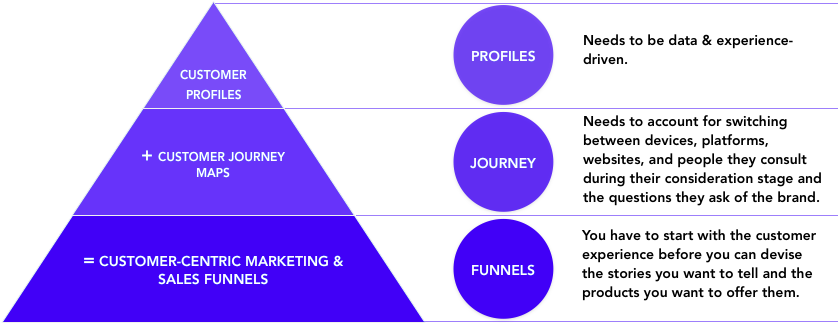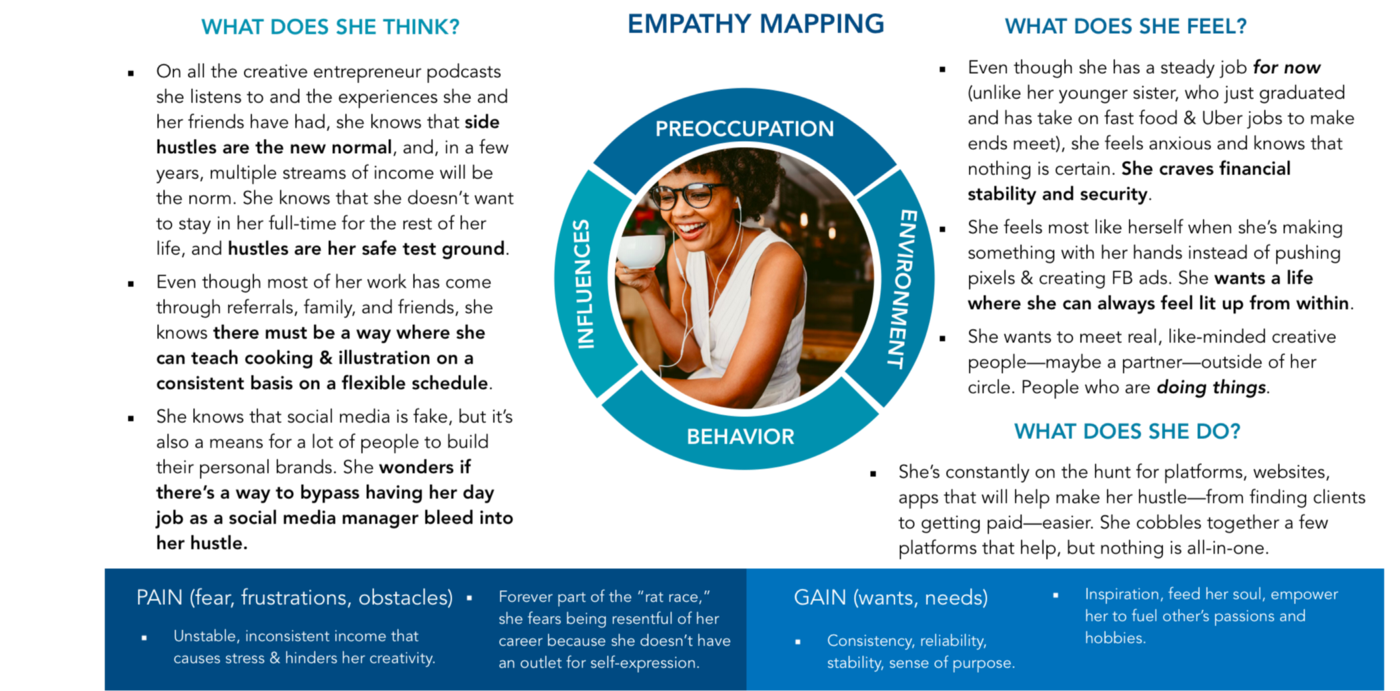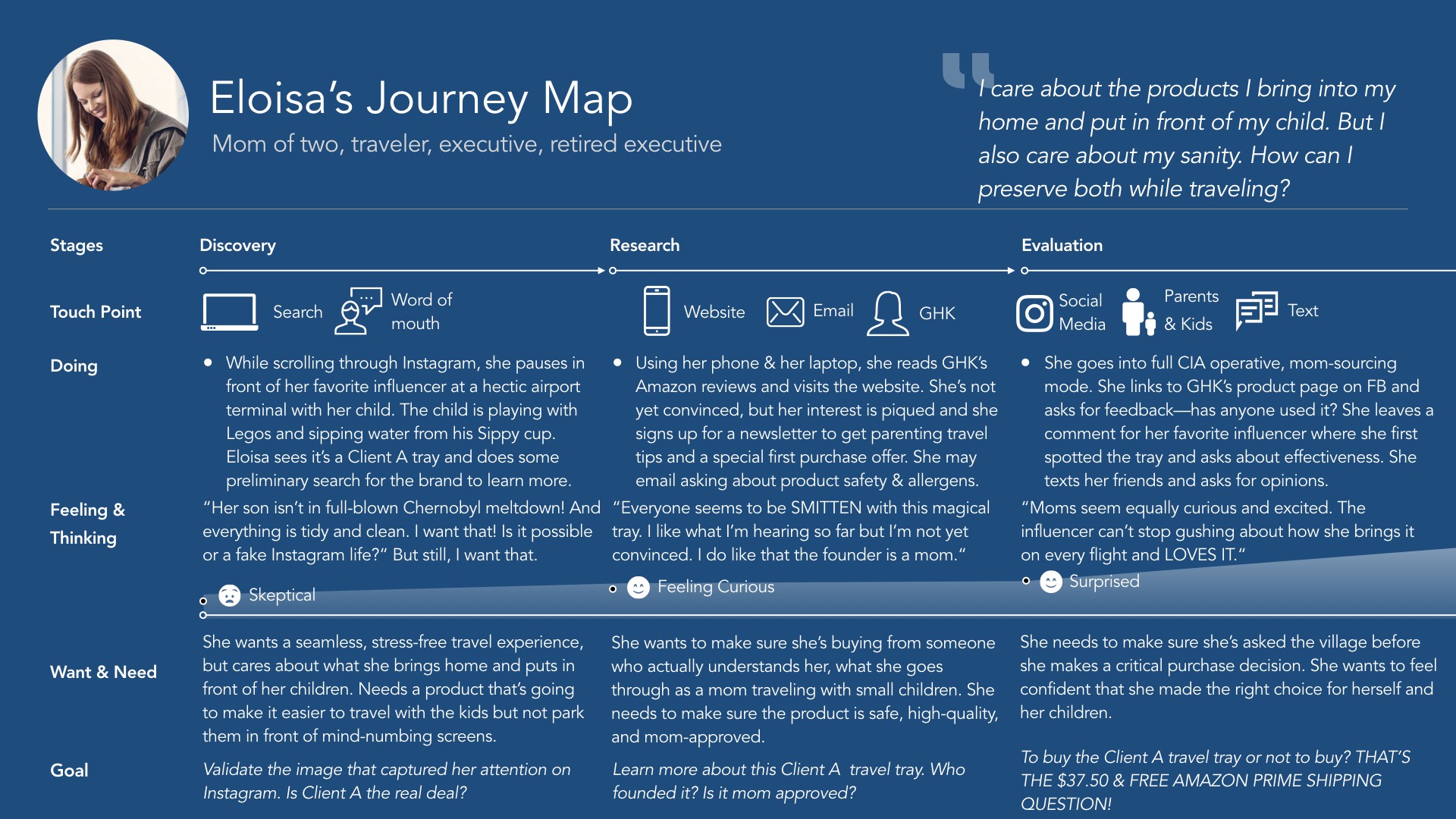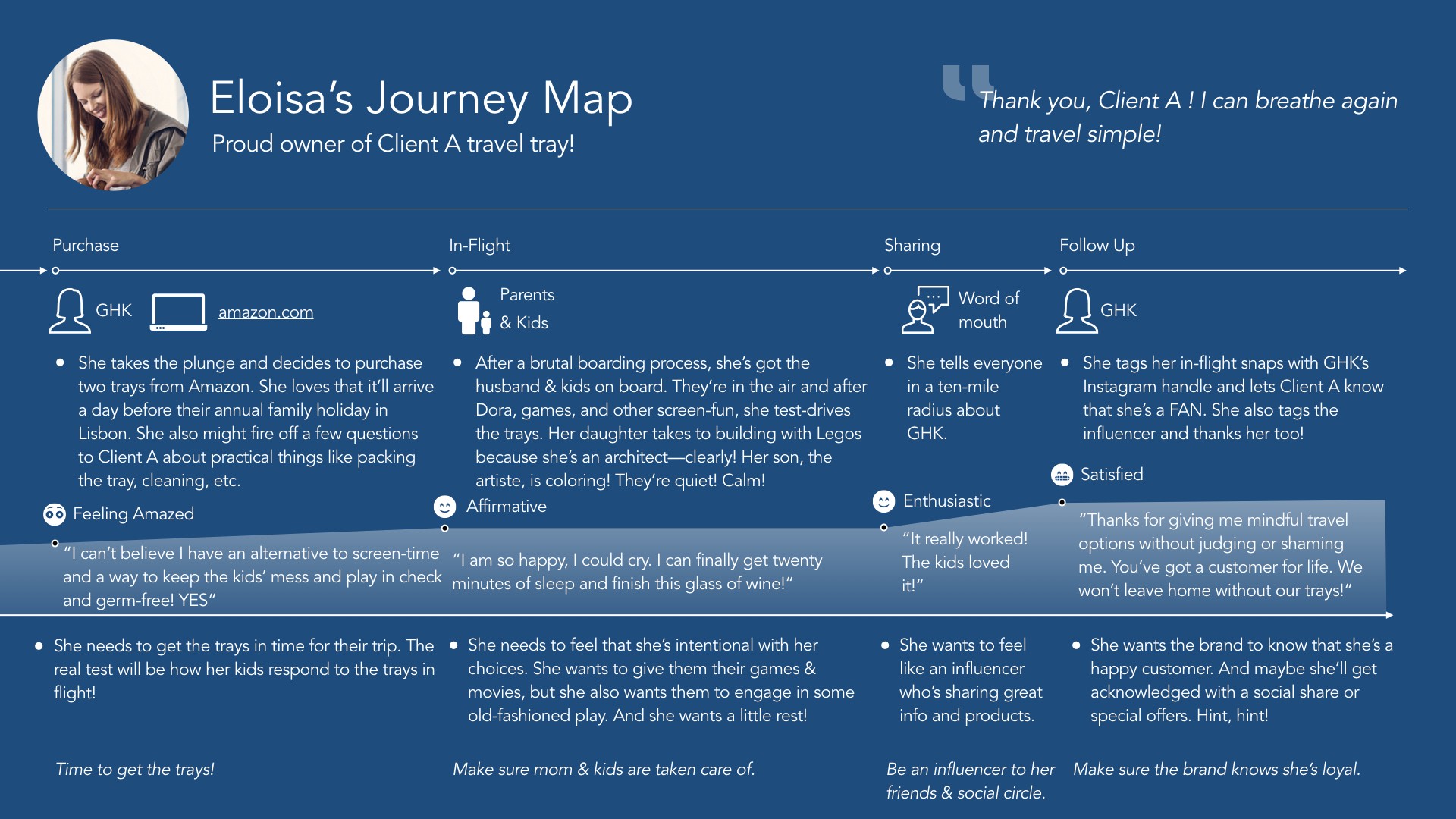You have so many questions. All the cool kids are on TikTok, should I be on TikTok? Should I hop on Instagram Reels and tell my life story? Is logging on Pinterest akin to watching tumbleweed in the desert? The idea of being in front of a camera gives me vertigo — should I be on YouTube? Should I blog, podcast, or send 10,500-word emails as the gurus of the moment keep preaching? It’s easy to feel overwhelmed since it feels as if there’s a new strategy, tactic, or course of action spouted every five minutes. A few brands with a stockpile of cash jump on a channel, their escapades get written up in AdAge or The Atlantic, agency acolytes with their equally shiny hair give their authoritative spin on single-paragraph LinkedIn posts, and all of a sudden everyone gets FOMO. Or a severe case of desperation. I will parrot this stat until I’m six feet under, 77% of consumers wouldn’t care if all the brands in the world vanished. Brands are noisy, lack purpose and a fundamental means of communicating it — too often concerned about how they “look” rather than what they’re doing for their customers. Brand magnetism is quickly fading, as consumers demand companies solve personal and societal needs. Don’t create to put something — anything — out there without considering if what you’re sharing is valuable or useful to your audience. Don’t publish as a desperate means to validate your existence. Don’t add to the content trash heap. Create when you have something meaningful to share because a strategy isn’t about flinging feces at the wall and praying something sticks. (Apologies to the scatalogical-adverse.) It’s about being intentional, knowing your brand, understanding your customers, and creating content that offers one or a combination of the following: value, utility, entertainment, education, inspiration, or reciprocity (sense of community, belonging). Be honest with yourself — are you being intentional with your content or are you scheduling filler copy with the expectation that your customers will sift through it in hopes of finding gold? They won’t. Whenever I build a strategy — whether it was my first or 500th, I go through a list of fifteen questions that ensure I’m not getting high on the shiny object supply and I’m building a business for the long haul.
1. Define your business and brand objectives
I always consider the customer’s path to purchase and how brands can be of service each step of the way (trigger => awareness => consideration => acquisition => loyalty (re-purchase) => advocacy). Depending on the particular year or quarter, what do I need to focus on? Do I have a new product I’m launching for which I want the world to know, or have I completely rebranded and I want consumers to hold a different perception of my company? Or, am I have problems retaining customers, post-purchase?
I focus on 1–3 core objectives that span the brand and business, and assign quantitative, qualitative and time-specific goals to them so I have a clear path forward with potentially some milestones along the way to track my progress.
2. Know your customer
Do you know the people who are buying your products? Have you done your research on the level of a CIA operative? When was the last time you actually spoke to your customers? Knowing your customers is never a one-off because people are complex and their attitudes evolve. I’ll refer to my customer segmentation study to understand the fundamentals — demographics, psychographics & buying behavior — and supplement that with real-time information from customer service and sales teams as well as formal and informal surveys and 1:1 conversations.
Remember, you’re not the hero of your business, your customer is, and centering them by understanding their wants, needs, preferences, triggers, influences, pain-points, habits, and buyer behavior makes messaging and marketing to them easier.
3. State your content goals and priorities
While I know my umbrella business and brand objectives, content marketing is one way of meeting those objectives. Business and brand goals lead to content goals.
A content goal is defined as the work that content has to do. Each goal is best served by certain channels, adhere to specific objectives and success measures. Content priorities identify what you want your content to communicate; they help narrow down and refine the job your content needs to get done. The point of identifying our priorities is to identify what types of information should be included in each piece of content — or across multiple pieces of content.
The best strategies have clear goals and priorities, which lead to customer clarity and a clear way to measure content effectiveness.
4. Assign performance metrics to your content
You’ve defined your objectives and goals — you’ve identified where you want to go, now it’s important to understand how you can measure your progress. All plans should have a test, learn, and refine approach. You’re always learning, always tweaking, always optimizing because the world is always changing.
And no, sales shouldn’t be your sole key performance indicator (KPI). Maybe it’s a set of metrics (CAC, CTR, CLTV) that brings prospects on the path to purchase and re-purchase. I wrote extensively about creating a content strategy, including defining how to evaluate the efficacy and efficiency of your content.
It’s also important to consider content performance on a spectrum. Depending on your objectives, your content may not bear a direct ROI and that’s okay. Maybe you want to shift perception, drive awareness, create authority, and drive trust — all of which have varying qualitative and quantitive metrics. Don’t be a myopic, short-term marketer. Consider the purpose of your content as it relates to the brand and business and how it solves for your short and long-term goals.
Especially now when consumers are cleaving to brands who’ve earned their trust.
5. Align content priorities with your brand pillars
Brand pillars are essential values we want to communicate, and our content should always touch one (or more) of the pillars. This is less about the topics you talk about — pillars run deep to the core of who you are and what you stand for. This is how your customers will feel when they interact with your brand. And your content priorities should reflect the pillars you created when you built your brand.
For example, perhaps a brand pillar is the concept of community — “we’re all in this together” — and, as a result, a content priority could be telling stories that empower fans, followers, and customers to offer feedback, create content and foster peer-to-peer connection.
What kind of content does your customer want to consume?
Often, I surprise clients by having them create their content priorities, then define their customer’s priorities, and when I show them side-by-side they’re rarely in alignment. While you have objectives and goals you want to achieve, they can’t be at the expense of what your customer wants and needs from you.
Topics are the categories of information they’re interested in with regard to your product, mission, values, and areas of experience and expertise. It’s critical to note that these are not topics you are interested in — it’s what they care about. The topics depend on your content goals.
Let’s say you’re a company that makes travel products for kids. You would create content that centers you as a travel authority, but you’ll want to speak directly to the parents’ emotional & pragmatic needs as parents traveling with a small child.
Bottom line: focus on telling stories that matter to your customers.
6. Align your content priorities with your customer’s wants, needs, challenges, and pain-points
Now that you’ve identified what you want our content to achieve, and now that you’ve researched your audience and the content they crave, it’s important to cross-check to ensure both are in alignment.
7. Figure out where your customer plays, channel-wise and go there
While you were playing detective, you probably researched the channels, platforms, and communities where your customers get and evaluate information, and connect with their peers and related brands.
If your core audience isn’t on TikTok, it makes zero sense to prioritize this as a channel. It can be part of your long-term strategy (depending on what you want to achieve) but jumping on a hot channel where your customers aren’t interacting with brands like you or engaging with their peers to get information and make decisions, or searching for solutions is more about you trying to snag a write-up in the trades.
Go where your customers are and build substantive relationships in those online spaces. This isn’t about being first, cool, or sexy — this is about being valuable to your customers.
8. Be honest about your resources, expertise, and time. What channel (s) can you prioritize and give your all? What forum do you feel most comfortable — video, visual, text, audio?
I tell clients they don’t need to be on all the channels doing all the things — especially if they’re cash and resource-strapped. This is about prioritizing where to play and how to win, and going to where your customers reside to create compelling content and experiences on those channels.
Let’s say most of your audience is on Instagram and you can’t snap a photo or tell a clever Story to save your life. Depending on the size of your business and resources, you can either learn how to do it, hire someone who knows how, or prioritize a channel where you can create stand-out content.
Keep it simple — pick 1–2 places and win in those places before you spread your seed all over the internet. The worst thing you can do for your brand is to create noise by showing up everywhere, offering up crap content that you cut and paste across the internet. Is this the impression you want to make? To show up simply to exist or to show up to knock their socks off their little feet? You decide.
People will disagree with me on this point, but here’s my I give zero fucks what you think face.
9. Before you get on a channel, observe your customers in the wild
I like to call this spying or intelligence gathering. Spend time watching and listening to your customers in how they interact with brands similar to yours. Note the questions they ask, how, when, and why they ask them. And, more importantly, observe how your customers talk to one another. Allow that to shape the kinds of content you create and how you show up for your customers.
Often, companies create fancy competitor analysis presentations and they leave out the most important point — how other brands in your category connect (or don’t) with your customers, which could serve to your advantage.
10. Determine the purpose, frequency, structure, format, and tone of the channels you’ve selected
Devise an operational blueprint for each channel because whether you’re on IG or podcasting, every channel has its inherent best practices and expectations. What form does your content take? Is there a preferable format and length? How often do you publish? What is the anatomy of most of the content you’ll create? How do you massage your overall brand tone based on the platform?
11. Build working themes and topics that service your brand and your customer
Themes are broad buckets of content while topics get specific. For example, let’s say you’re a clothing brand that services professionals. “Office attire” could be a theme. “Wearing athleisure to work,” would be a topic or article idea under the theme.
Themes are evergreen and can accommodate a variety of topics.
Let’s talk about the brand vs. product question. Many of my clients wonder how to strike the balance between talking about the brand and the products. That’s not the question you should be asking.
Instead, ask how you gain their trust. You gain trust by being authentic, honest, transparent, consistent, valuable and useful. Ask yourself — when you talk about your brand or products, will your customer find it useful, valuable, informative, or entertaining when making their purchase (& re-purchase decision)? Are you serving them or yourself?
12. Create your operational blueprint
Design a workflow for the brainstorming, creation, distribution, syndication, promotion, management (including all software and tools that help with everything from scheduling to publishing to editing), and measurement of your content.
13. Consider content in the context of its distribution
Not all platforms are created equal — each has its own personality and rules of engagement. If you’re shooting a video, consider how to recycle or repurpose that content so it fits each channel, is unique content for the channel and you’re not spamming it on every channel. Some channels might benefit from a voice-over, others with more behind-the-scenes action, etc.
This is about being intentional by design so you can provide each platform with the most compelling content for that platform. And remember, there are no dead ends in marketing — every interaction with a consumer has to lead them to the next step in their journey.
14. Build a journey map to bring all the pieces together
It’s easy to believe your customers’ journey is linear. They hear about your brand, they do a little research, and they buy your product. BOOM.

But it’s rarely that simple. The journey is circuitous, and they’re constantly bouncing between devices, platforms, and points of influence.
For me, customer journey maps are an active, iterative exercise, which reminds me to think like the customer — the questions they ask, the platforms they use, and the information they need. Then, I devise content & distribution tactics to meet them at each step of the way.
First, I start with an empathy map, which attempts to identify what a customer thinks, feels, and does when it comes to buying the types of products you sell. Below is a sample map I created for a client.

Then, I’ll use that information to build a customer journey map, where I’ll ultimately overlay content, channels, and ultimately campaign tactics that account for each stage or the entire path to purchase (and between points of purchase).
Here’s a sample CJ map I created for a client:


15. Finally, when you’re creating content and publish it on your 1–2 prioritized channels, ask yourself:
Can we ask a question nobody else is asking? Can we answer it?
What’s everyone thinking but not saying?
Is there an unexpected way into the topic?
Is there anyone we can tag in our copy?
How can we reframe the conversation in an unexpected way?
Can we make a bold statement?
Is there an unexpected connection to larger cultural conversations?
How can we integrate our product without it sounding salesy?
Can we inject imagination and practicality into the conversation?
For any real-time events, is there a way to engage with our followers who can’t be there?
Challenge yourself. Publish. Learn. Iterate. Publish Again. Don’t abandon a strategy once because it didn’t until you’ve analyzed all the ways in which you could have made it work.
A brand is no longer what we tell a consumer it is — it’s what they tell us and others who we are. Authentic marketing is about being open and truthful about your approach, using real people to bring your content to life and make them resonate. Treat your customers like humans, not transactions. Don’t be afraid to have a personality, to screw up, and to be real.
Make your customers’ story your story.
Article originally published to Medium
Written by Felicia C. Sullivan
